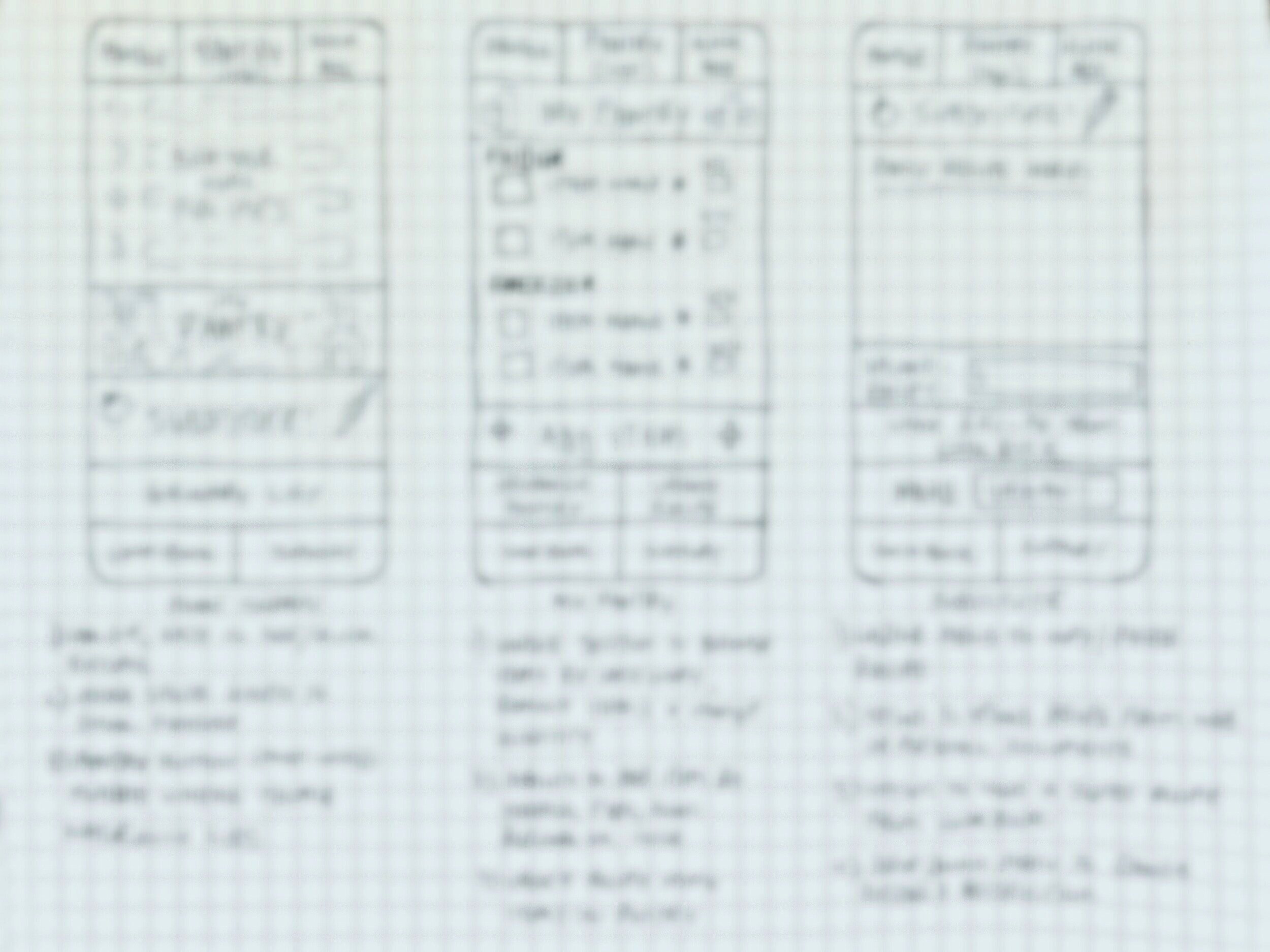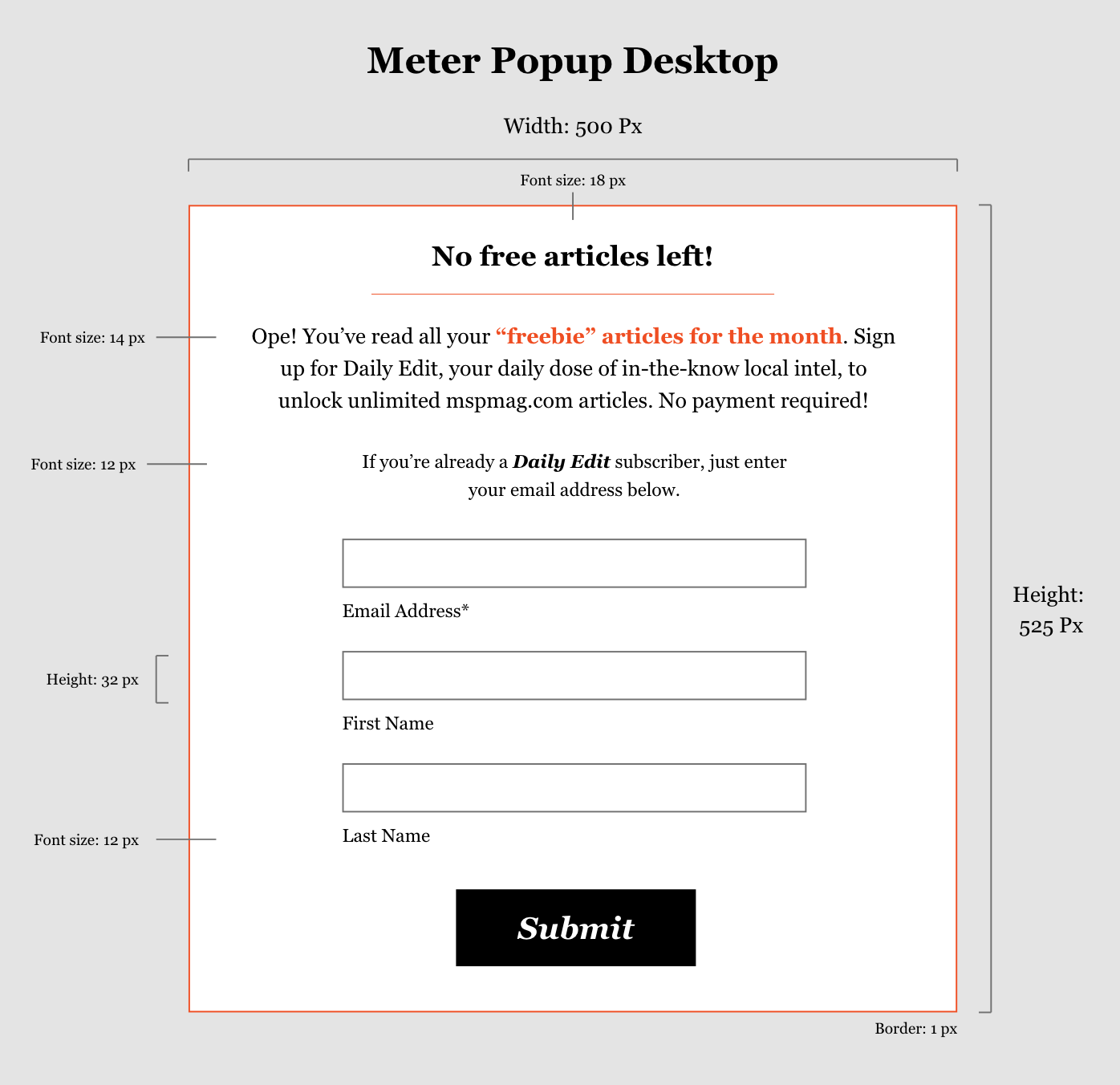
MSP Mag Gating System
What’s the best way to convince site visitors to sign up for a free newsletter? Exploring user flows by mildly annoying the people of the twin cities with the MSP Mag Gating System.
Url: https://mspmag.com/
Research: Stakeholder Interviews, Competitive Analysis
Tools: Adobe XD, Hubspot, Google Docs, Microsoft Teams
Executive Summary
Problem Space
Mpls St Paul Magazine (also known as MSP Mag) has been delighting and informing members of the twin cities community for decades, and of their best offerings are their free newsletters. From the Daily Edit offering news and culture every day to limited-offerings like the 12 Days of The State Fair, a ton of great content is served up to subscribers. The editors of MSP Mag wanted to introduce a gating system to prompt site visitors to subscribe to one of their newsletters in order to access their articles, and approached MSPC to lead the design and implementation.
Our Approach
Through stakeholder meetings and competitive analysis, we devised a metered soft-gating system that allowed site visitors to access a certain number of “free” articles per month before content gating began. We strove to create a system that was as unintrusive to the reading experience as possible while still providing the context they need to decide whether to subscribe.
Research
Stakeholder Interviews
Interviews were conducted with two groups: editors of MSP Mag and magazine subscribers. The MSP Mag editors were looking for a gating system but did not have a solid structure in mind. They informed us that a lot of their articles, particularly restaurant reviews, are fairly evergreen and get reliable traffic long after they are posted. We also learned that their Hubspot integration allowed for the checking of incoming email addresses to filter out fake addresses. From subscribers, we learned that while they understood that they could not expect full unfiltered access to all articles to last forever and were more than willing to give their email addresses to get access to content, they did not want the experience to be stifling - they cited the Star Tribune as an example of a local editorial that is too aggressive with its content gating.
Competitive Analysis
For the competitive audit, we elected to look at a variety of competitors, from local editorials to other regional magazines to national and global enterprises to see how their gating systems operated.
We found that in general, a metered system offered a good soft introduction to the gating system and allowed users to become more engaged with content before being asked to pay or subscribe, which we believed would lead to a higher conversion rate.
Also, we found that allowing users to scroll through the first few paragraphs of an article also led to a better overall experience and higher conversions.
Lastly, we saw that a careful balance had to be maintained so that metered messages were large enough to not be missed, but they should not be interrupting the reader’s enjoyment of their content.
The New Yorker allows readers to get through a portion of an article before introducing the gate
Medium does a good job informing readers of their meter system without being too intrusive
Design
From our research and conversations with MSP Mag, we agreed on using a soft gating system with a meter. The meter allows site visitors to read up to three articles per month before the gate is triggered, at which point they won’t be able to read another article without subscribing to at least one of MSP Mag’s free newsletters.
Overall Styling
The styling of the meter and gate widgets needed to walk a fine line - they had to be noticeable enough to not be ignored, but not so loud as to be annoying or intrusive. After several iterations, the final styling incorporated the signature orange color of the site into just enough elements to make the widgets pop. In addition, the copy for the widgets was written to be light-hearted with classic Minnesota-isms like “Ope!” included to soften the language.
Meter vs Gate
We determined that the implementation of the meter and the gate widgets needed to be different from each other in order to provide the intended experience. The meter was designed to sit inline with the article text so that users were not being subjected to intrusive popups every time they chose to read an article.
Alternatively, the gate was designed as a lightbox-style popup, darkening and blurring the background so that users knew right away they had to focus their attention on the widget and make a clear decision. We also chose to make the email address the only required element of the form in order to increase chances of conversion.
User Flows
Working with MSP Mag, we crafted two distinct gating systems: the soft-gating system with metering for regular articles and a hard-gating system for feature articles and lead-gen content like best-of lists.
The user flows for each system were relatively simple: the meter widgets included a link to the subscription signup page, and the gating widgets included a direct signup form. Error messages for the popups were handled dynamically, and a “success” popup message would be presented to the user without the lightbox effect to let them know they had successfully subscribed to the Daily Edit newsletter.
User Testing
The gating system was tested with a group of about twenty individuals about a month before launch. No major changes to the user flows were needed, but some language was updated to make the flow more clearly defined, and a number of bugs needed to be fixed.
Pre and post-launch QA was undertaken by the MSPC team and the system was considered stable and largely bug-free about two months after launch.
Results
Conversion rates have been well above expected, with an average of nearly 20% in the first six months, and higher rates during holidays and the State Fair. There have been some minor issues with fake email addresses passing through the system, but the numbers are not high enough to justify any major changes.






